IN PICTURES: New species from 2009
23.12.09
In most years - globally - approximately 2,000 new plants make themselves known to science. The most prolific is probably the team at Kew who collectively discovered more than 250 new species in 2009.
These new species provide us with a wealth of new ecological, evolutionary, and commercial knowledge, while also informing conservation tactics. They are also a timely reminder of the need to protect habitat as an uncountable number of other species must meet extinction without ever being described.
This gallery of images shows some of the more remarkable species to enter the record this year.
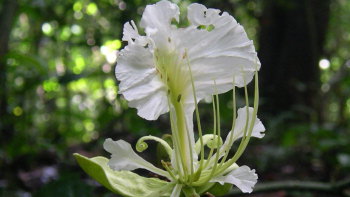
Berlinia korupensis in the Fabaceae family was found in the rainforests of Cameroon. It has beautiful white flowers and tops out at over 42m.
Just 17 plants were found in the survey in Korup National Park.
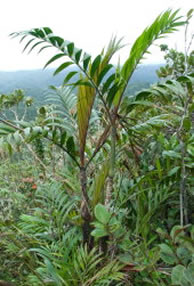
Dypsis ankirindro was one of 20 new palms found on Madagascar this year. According to Kew less than 10% of Madagascar's original vegetation remains and up to 300,000 hectares of forest are destroyed every year.
Half of all the palm species on the giant island have been discovered by Kew scientists and Plant Talk reported on one of these, Tahina spectabilis, in 2008.
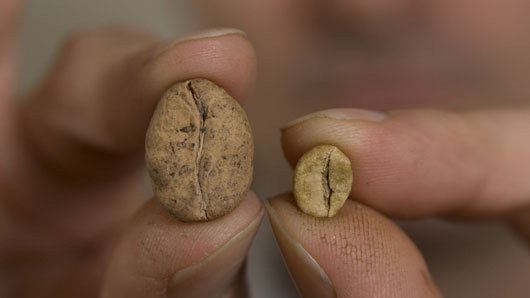
Coffea ambongensis produces the world's largest coffee bean and was found in the mountains of northern Madagascar.
It's pictured here with a bean from Coffea arabica - the most commonly grown commercial coffee.
© RBG Kew
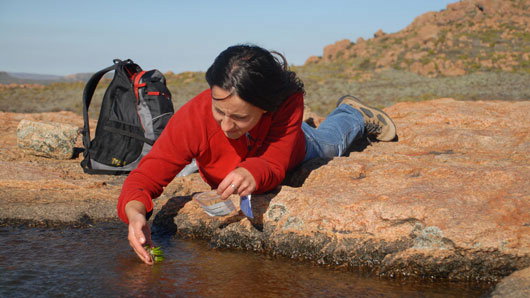
Isoetes eludens, a species of an ancient group of spore-plants known as quillworts, was named because it eluded scientists for seven years in its habitat of remote mountainous rockpools in South Africa.
Found by the Director of Kew, Prof Stephen Hopper, it's pictured here with Dr Rhian Smith.
© Stephen Hopper/RBG Kew
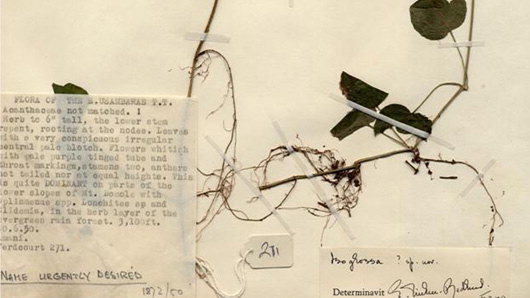
Isoglossa variegata was amazingly re-found being grown as bedding in the Princess of Wales Conservatory. Dr Iain Darbyshire stumbled over it during a saunter round the famous glasshouse.
Here's the type specimen from the 1950s with the scribbled note 'NAME URGENTLY DESIRED'.
© RBG Kew
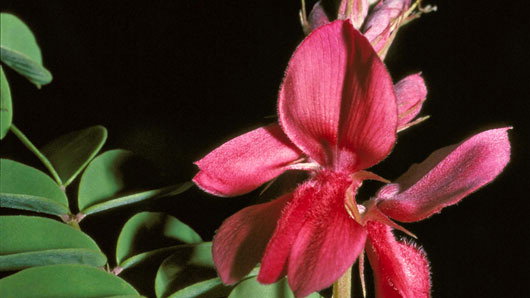
An extraordinary 14 species of the genus Indigofera, which produces the blue dye indigo, so important in history and trade, have been described as new to science in 2009.
Here's Indigofera serpenticola from southern tropical Africa.
© Brian Schrire/RBG Kew
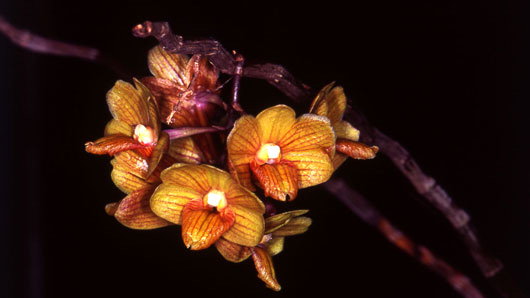
38 new orchids were added to the wealth of global orchids, which is approximately 25,000 strong, by Dr Jeff Wood and Dr Phil Cribb.
This rare beauty is Dendrobium serena-alexianum from the slopes of Mount Kinabalu in Borneo - an island ravaged by exploitation.
© Tony Lamb
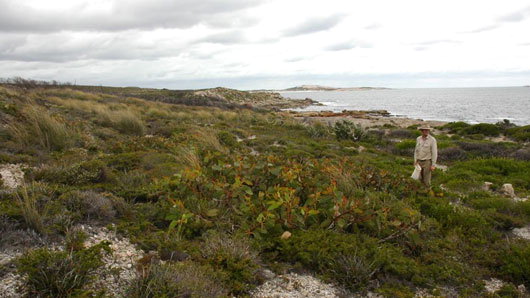
Another discovery by Kew's Director was Eucalyptus sweedmaniana from Australia. This is a dwarf type that can survive the ravaging bush fires by retreating to an underground rootstock.
Luke Sweedman, after who the plant is named, is photographed with the plant.
Related links:
Kew's new discoveries on an interactive map
UK: Hundreds of new species round-off Kew's anniversary year
22.12.09
 It's been a remarkable year for Kew, as it celebrates its 250th year, and as we enter the International Year of Biodiversity in 2010 comes news of over 250 new species discovered by botanists from the famous London garden.
It's been a remarkable year for Kew, as it celebrates its 250th year, and as we enter the International Year of Biodiversity in 2010 comes news of over 250 new species discovered by botanists from the famous London garden.
UK: Three new Sorbus from Cheddar Gorge
18.12.09
 The UK is not renowned for its native tree species, but it can claim three more Whitebeams (Sorbus) thanks to some cliff-hanging work by scientists from Bristol University and the National Museum of Wales (NMW).
The UK is not renowned for its native tree species, but it can claim three more Whitebeams (Sorbus) thanks to some cliff-hanging work by scientists from Bristol University and the National Museum of Wales (NMW).
Himalayas: Vulnerable new species at mountainous crossroads
10.08.09
 A new report by WWF - The Eastern Himalayas: Where Worlds Collide - describes more than 350 new species living at a geographical and ecological crossroad.
A new report by WWF - The Eastern Himalayas: Where Worlds Collide - describes more than 350 new species living at a geographical and ecological crossroad.